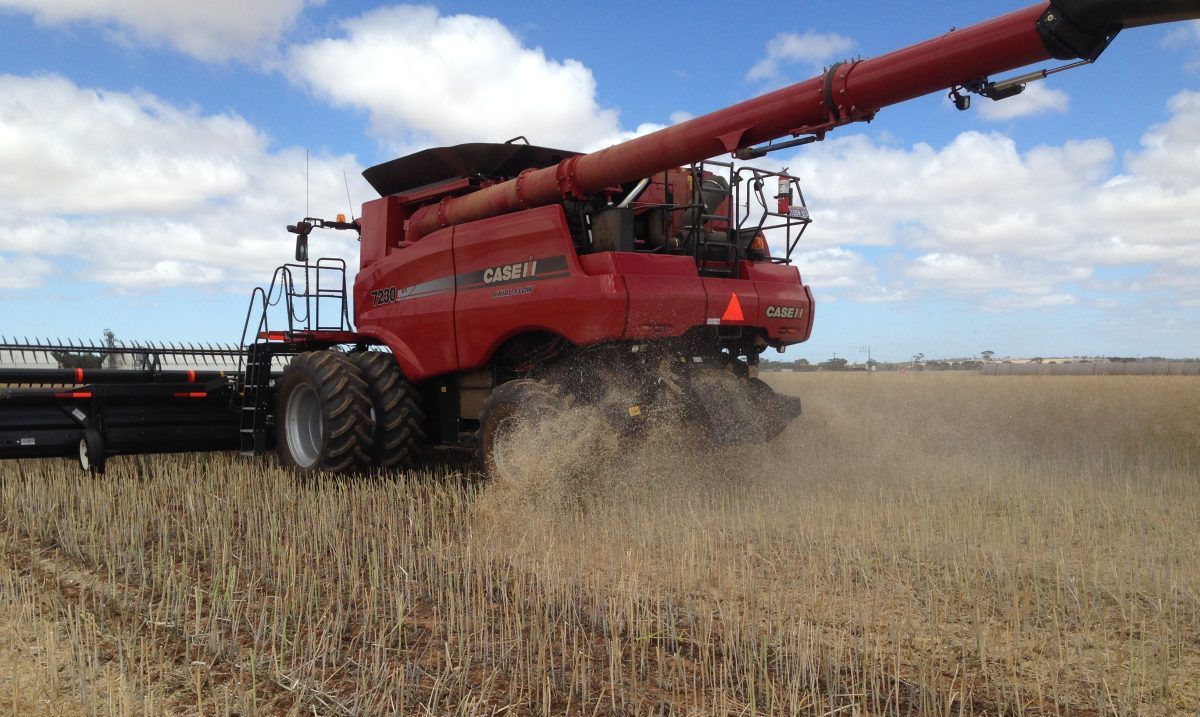
Harvesting at the long-term rotation. Photo: Ken Flower
GRAIN growers must place a greater emphasis on uniformly spreading crop residue during conservation farming, according to new research from the University of Western Australia (UWA).
The study, recently published in the journal Soil & Tillage Research, investigated how long-term uneven residue spread in cereal (wheat-wheat-barley) and diverse (wheat-legume-canola) crop rotations influenced soil chemistry and crop establishment and yield.
The research team included members of UWA, CSIRO and WA No-Tillage Farmers Association.
The project was co-funded by the Grains Research and Development Corporation and conducted in the final half of a 12-year (2007–2018) rotation trial at the Cunderdin College of Agriculture in the WA grainbelt.
Conservation agriculture has three main components: minimal soil disturbance, diverse rotations, and crop residue retention.
While it is important to retain crop residues on the soil surface to prevent erosion and conserve water, project lead Ken Flower, from the UWA School of Agriculture and Environment and the UWA Institute of Agriculture, said the effect of different amounts and types of residue on crop yield was complex.

Ken Flower
“Residue can have positive or negative effects on the crop, and the response in any particular year is largely driven by the weather conditions,” Associate Professor Flower said.
“For example, with dry early sowing conditions, increasing amounts of residue generally had a positive effect on yield.
“However, with frost occurring around flowering, increasing amounts of cereal residue had a negative impact on wheat yield, whereas break crop residue did not.”
Associate Professor Flower said this difference was thought to be mainly related to variations in ground cover.
“Increasing the amount of break crop residue in the cropping system would likely maintain the positive effects of residue and reduce any negative impacts.
“As residue spread behind harvesters is not always uniform, it is also important to understand the impact of uneven residue spread on crop performance.”
The researchers found that uneven crop residue distribution influenced soil chemical composition in the long term, producing higher soil pH, organic carbon, and some nutrients directly behind the harvester.
“These problems are likely to increase as more farmers windrow and burn residues for weed control, and as harvesters become larger in controlled traffic systems, making it more difficult to spread residue across the full cutting width.
“Therefore, to avoid the wavy effect in crops, greater emphasis is required on uniform spreading of residue.”
Source: UWA

HAVE YOUR SAY